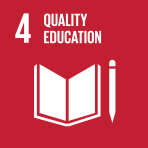 Quality Education
Quality Education
Introduction
Haïti est confronté à une crise humanitaire dévastatrice, qui évolue rapidement.
Répercussions sur la santé et la nutrition des enfants
Plus de 1 million d’enfants sont en situation d’insécurité alimentaire sérieuse (phase 3 ou plus de l’IPC).
Déplacement et retour des personnes déplacées
Au milieu de l’année 2025, les Haïtiens continuaient de subir des violations des droits humains parmi les plus graves de l’histoire récente du pays et de vivre des situations très dangereuses.
Les enfants en Haïti face à une polycrise: L’effet combiné de la violence, de la malnutrition, de pertes d’apprentissage et de l’effondrement des services essentiels
UNICEF sos enfants
Haïti est confronté à une crise humanitaire dévastatrice, qui évolue rapidement. Les enfants en paient le prix fort, alors que la violence ne cesse de s’intensifier, que les déplacements internes se multiplient et que les familles sont privées de services élémentaires, notamment de nourriture, de soins, d’éducation et de protection. Si aucune mesure ferme n’est prise, l’avenir de toute une génération est en péril.
Résumé analytique
En 2025, en Haïti, plus de 3,3 millions d’enfants ont besoin d’une aide humanitaire, alors qu’ils n’étaient que 3 millions en 2024.
Contexte historique de la crise actuelle
La crise qui touche actuellement Haïti ne s’explique pas par un événement unique, mais par des décennies de chocs successifs et par une instabilité chronique.
Une crise de protection pour les enfants et les femmes
Aujourd’hui, en Haïti, les enfants ne sont pas seulement des victimes collatérales.
Une urgence éducative
Le système éducatif haïtien périclite, et c’est l’avenir de toute une génération qui est en jeu.
Analyse de situation : un pays au bord du gouffre
On estime que 6 millions d’Haïtiens, soit plus de la moitié de la population, et 3,3 millions d’enfants, ont besoin d’une aide d’urgence.
Foreword
Our world is going through tremendous turbulence and uncertainty, from escalating conflict to climate chaos, to growing divisions and discrimination. Children and youth, who make up more than a quarter of the world’s population, often bear the brunt of these challenges, and they wonder what the future holds.
An education emergency
Haiti’s education system is in freefall – with the future of an entire generation of children hanging in the balance.
Situation analysis: A country on the brink
An estimated 6 million Haitians, more than half of the population and including 3.3 million children, are in urgent need of assistance.
A protection crisis for children and women
In Haiti today, children are not only caught in the crossfire, but they are also being directly targeted.
The polycrisis for Children in Haiti: The Ripple Effect of Violence, Malnutrition, Lost Learning and Failing Essential Services
UNICEF Child Alert
Haiti is facing a devastating and fast-evolving humanitarian crisis as violence spirals, internal displacement soars and families are cut off from basic services. ‘The polycrisis for children in Haiti’ draws on the latest data, field reports and sectoral analyses to sound the alarm on the scale of the crisis facing children in Haiti.
Displacement and return
As of mid-2025, Haitians continue to endure some of the most severe human rights violations and life-threatening situations in the country’s recent history.
Today’s crisis in historical context
Haiti’s current crisis is not rooted in one single event, but in decades of compounding shocks and chronic instability.
